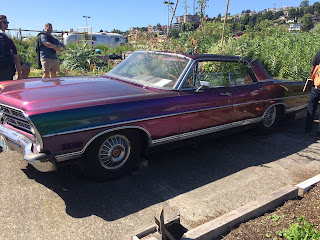Recent studies have shown that night lights are impacting urban vegetation as well. A paper entitled "Ecological effects of artificial light at night on wild plants" was published in the February 2016 Journal of Ecology by Bennie, Davies, Cruse and Gaston. In it, they find that lights at night change some plant species leaf and flowering characteristics, and can have significant effects on the health, survival and reproduction of plants. Many urban designers are now selecting night and security lights that have shields to light just the ground, rather than the entire sky. An organization called the International Dark Sky Association creates public awareness and assists conservation organizations with lighting management. You can find out more at http://darksky.org/
Edgelands are the forgotten places in a city: the abandoned lots, warehouses, railroad tracks, and parking lots that have fallen into disrepair. As years go by, weed seeds germinate through cracks in the asphalt and a new urban ecology begins. Native and non-native plants take root and wildlife food and shelter are reintroduced. This site explores the values of neglected urban wildscapes and points out why we need them in the city.
Wednesday, June 22, 2016
Lights Out? Give us back our Dark Skies
Monday, June 13, 2016
Thursday, June 2, 2016
Suburban Habitats
“It is increasingly clear, as we shall see, that much of our wildlife will not be able to survive unless food, shelter, and nest sites can be found in suburban habitats.”
—Doug Tallamy, Bringing Nature Home
Subscribe to:
Comments (Atom)



